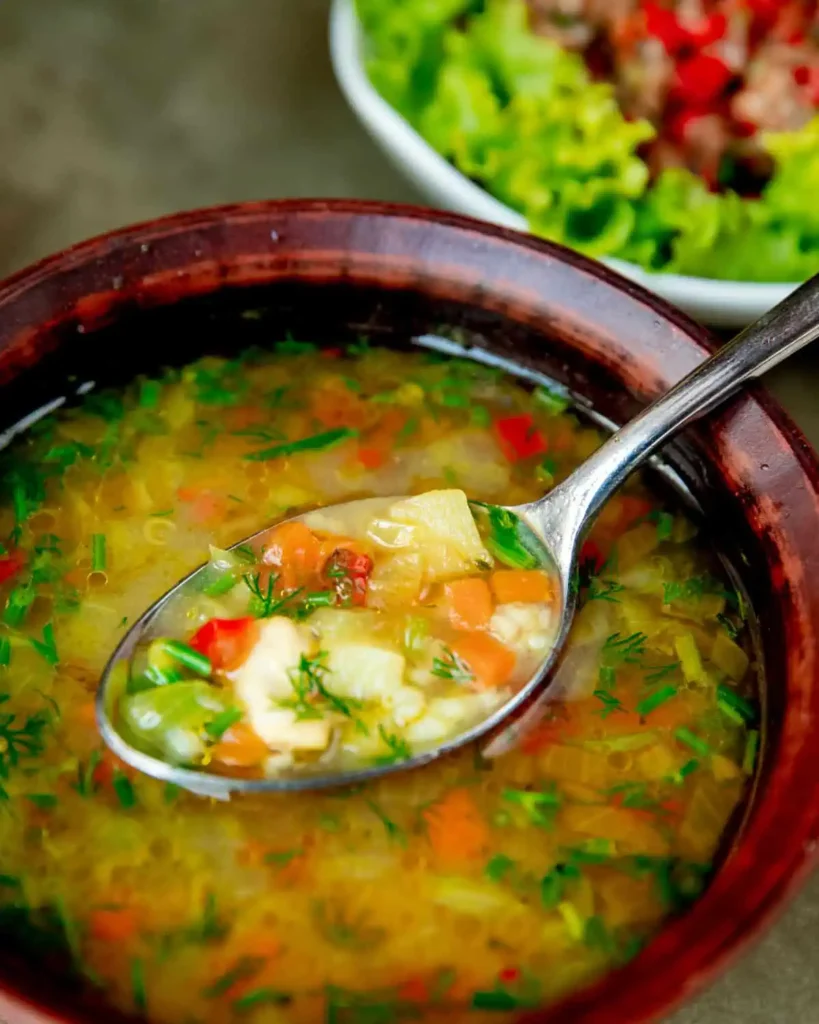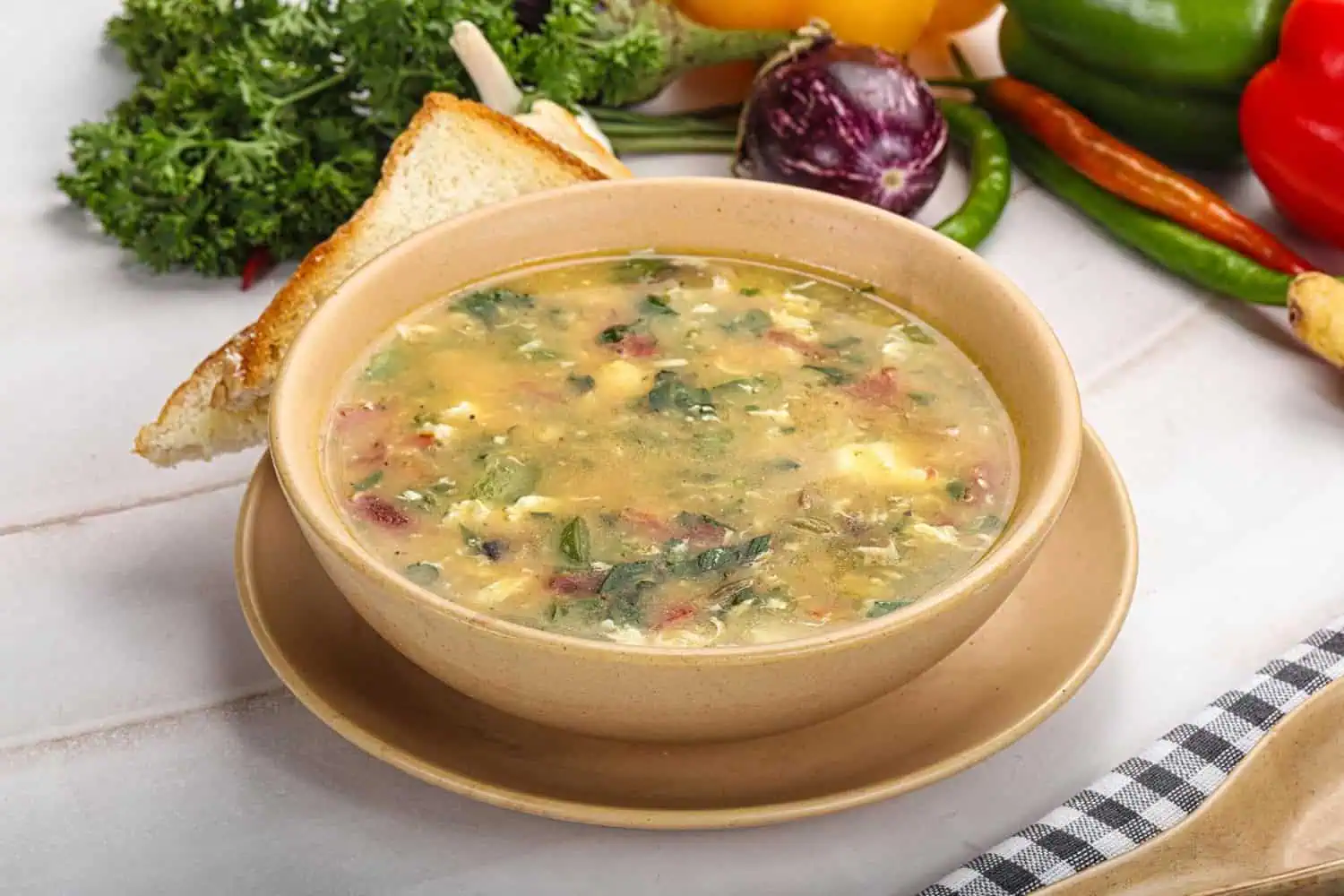Are you looking for a rich, hearty, and deeply satisfying meal? Look no further than this authentic swamp soup recipe, a beloved Southern dish that combines the best of Cajun flavors with wholesome ingredients. This comprehensive guide will walk you through everything you need to know about creating this delicious comfort food that’s perfect for cold weather or any time you’re craving something truly special.
In this article, we’ll explore the origins of swamp soup, its essential ingredients, step-by-step instructions, variations, and even tips for storage and reheating. By the end, you’ll be ready to whip up a pot of this flavorful dish that’s sure to impress your family and friends.
What is Swamp Soup?
Swamp soup, also known as swamp gumbo or bayou soup, is a traditional Southern dish that originated in Louisiana’s bayou country. This hearty soup gets its unique name from its dark, murky appearance, which comes from the combination of various ingredients and the signature roux base. Despite its unassuming name, swamp soup is packed with bold flavors, tender meats, and fresh vegetables, making it a favorite comfort food in the South.
The dish is a reflection of the region’s rich culinary heritage, blending French, African, and Native American influences. It’s a versatile recipe that can be adapted to suit your taste, but the key to its authenticity lies in the roux—a slow-cooked mixture of flour and fat that forms the foundation of the soup.
Why is it Called Swamp Soup?
The name “swamp soup” comes from its appearance. The dark roux, combined with green vegetables like okra and herbs, gives the soup a murky, swamp-like look. But don’t let the name fool you—this dish is anything but ordinary. Its complex flavors and hearty ingredients make it a standout in Southern cuisine.
The name also reflects the dish’s origins in the bayou regions of Louisiana, where swamps and wetlands are a defining feature of the landscape. The soup’s rustic, earthy appearance mirrors the natural beauty of the region, making it a true representation of Southern culture and tradition.
The History of Swamp Soup
The origins of swamp soup are deeply rooted in the culinary traditions of Louisiana, particularly in Cajun and Creole cooking. These cuisines were shaped by the diverse cultural influences of French settlers, African slaves, and Native Americans, who brought their unique cooking techniques and ingredients to the region.
The use of a roux as the base for the soup is a hallmark of French cuisine, while the inclusion of okra and file powder reflects African and Native American contributions. Over time, these elements blended together to create the rich, flavorful dish we know today as swamp soup. It’s a dish that tells a story of resilience, creativity, and the ability to make something extraordinary out of simple, humble ingredients.
Essential Ingredients for Swamp Soup
To make an authentic swamp soup recipe, you’ll need a mix of fresh vegetables, proteins, and spices. Here’s a breakdown of the key ingredients:
Base Ingredients
- Dark roux: Made from equal parts flour and oil, the roux is the heart of the dish. It adds depth and richness to the soup.
- Andouille sausage: A smoky, spicy sausage that’s a staple in Cajun cooking.
- Chicken or turkey: Adds protein and flavor to the soup.
- Holy Trinity: A mix of onions, celery, and bell peppers, this is the foundation of many Southern dishes.
- Garlic: For added depth of flavor.
- Chicken stock: Provides the liquid base for the soup.
Vegetables and Herbs
- Okra: A classic ingredient in Southern cooking, okra helps thicken the soup and adds a unique texture.
- File powder: Made from ground sassafras leaves, this is a traditional thickener and flavor enhancer.
- Fresh parsley: For garnish and added freshness.
- Green onions: Adds a mild onion flavor.
- Bay leaves: Infuses the soup with a subtle, earthy aroma.
- Thyme: A fragrant herb that complements the other flavors.
Seasonings
- Cajun seasoning: A blend of spices that adds heat and complexity.
- Black pepper: For a touch of spice.
- Cayenne pepper: Adds a kick of heat.
- Salt: To taste.
Step-by-Step Swamp Soup Recipe
Making swamp soup may seem intimidating, but with a little patience and attention to detail, you’ll be able to create a dish that’s bursting with flavor. Follow these steps for the perfect pot of swamp soup:
1. Preparing the Roux
The roux is the most important part of the recipe, so take your time with this step.
- Heat ½ cup of oil in a large, heavy-bottomed pot over medium heat.
- Gradually add ½ cup of flour, whisking constantly to prevent lumps.
- Cook the roux, stirring frequently, until it turns a dark chocolate brown color. This can take 20-25 minutes, so be patient.
2. Building the Base
Once your roux is ready, it’s time to add the base ingredients:
- Add the holy trinity (onions, celery, and bell peppers) to the roux.
- Cook for 5-7 minutes, or until the vegetables are softened.
- Add minced garlic and cook for another minute.
- Stir in Cajun seasoning, black pepper, and cayenne pepper.
3. Adding the Main Ingredients
Now it’s time to add the proteins and liquid:
- Slice the andouille sausage into rounds and add it to the pot.
- Pour in 6 cups of chicken stock and stir to combine.
- Add chicken pieces (or turkey) and bring the soup to a simmer.
4. Finishing Touches
To complete the soup:
- Add 2 cups of sliced okra to the pot.
- Simmer the soup for 45-60 minutes, stirring occasionally.
- Taste and adjust the seasonings as needed.
- Remove the pot from heat and stir in 1 tablespoon of file powder.

Tips for Perfect Swamp Soup
- Don’t rush the roux: A properly cooked roux is essential for the rich, nutty flavor of the soup.
- Use fresh ingredients: Fresh vegetables and herbs will make a big difference in the final dish.
- Simmer slowly: Allowing the soup to simmer gives the flavors time to meld together.
- Serve with rice: For a traditional presentation, ladle the soup over a bed of hot white rice.
Variations and Substitutions
One of the best things about swamp soup recipe is its versatility. Here are some ideas for customizing the recipe to suit your preferences:
Meat Options
- Shrimp: Add peeled and deveined shrimp during the last 10 minutes of cooking.
- Crawfish: A classic addition for a true taste of Louisiana.
- Duck: For a richer, more decadent version.
- Alligator meat: A unique option that’s popular in Cajun cuisine.
Vegetable Additions
- Corn: Adds sweetness and texture.
- Mushrooms: For an earthy flavor.
- Tomatoes: A touch of acidity balances the richness of the soup.
- Collard greens: Adds a hearty, nutritious element.
Dietary Modifications
- Vegetarian version: Use vegetable stock and replace the meat with mushrooms, tofu, or extra vegetables.
- Low-carb option: Serve the soup without rice or use cauliflower rice instead.
Storage and Reheating
Swamp soup is a great make-ahead dish, as the flavors only improve with time. Here’s how to store and reheat it:
Storage Tips
- Refrigerate: Store the soup in an airtight container in the refrigerator for up to 4 days.
- Freeze: Freeze the soup in individual portions for up to 3 months. Be sure to leave some room in the container for expansion.
Reheating Instructions
- If frozen, thaw the soup in the refrigerator overnight.
- Reheat the soup on the stovetop over low heat, stirring occasionally.
- Add a splash of chicken stock if the soup is too thick.
Health Benefits of Swamp Soup
Not only is swamp soup delicious, but it’s also packed with nutrients. Here are some of the health benefits:
- High in protein: Thanks to the chicken, sausage, and other meats.
- Rich in vegetables: Okra, celery, and bell peppers provide fiber, vitamins, and minerals.
- Contains beneficial herbs and spices: Ingredients like garlic, thyme, and cayenne pepper have anti-inflammatory properties.
- Low in carbs: When served without rice, swamp soup is a great option for low-carb diets.
Serving Suggestions
Swamp soup is traditionally served over rice, but there are plenty of other ways to enjoy it. Here are some ideas:
Traditional Accompaniments
- White rice: The classic pairing for swamp soup.
- French bread: Perfect for soaking up the flavorful broth.
- Hot sauce: Add a few dashes for extra heat.
- Fresh parsley: A simple garnish that adds a pop of color.
Modern Twists
- Cauliflower rice: A low-carb alternative to white rice.
- Cornbread: A sweet and savory side that complements the soup.
- Crusty sourdough: For a more rustic presentation.
- Green salad: A light, refreshing side dish.
FAQs About Swamp Soup
What makes swamp soup different from gumbo?
While similar, swamp soup typically has a darker roux and often includes more varied meats and vegetables than traditional gumbo. It also has a thicker, heartier consistency.
Can I make swamp soup ahead of time?
Yes! In fact, many people believe it tastes better the next day as the flavors have more time to develop.
Is swamp soup spicy?
The spice level can be adjusted to your preference. Traditional recipes have a moderate heat level from the andouille sausage and cayenne pepper.
Can I make a vegetarian version?
While not traditional, you can create a vegetarian version using mushrooms, extra vegetables, and vegetable stock. However, it will significantly alter the authentic flavor profile.
How thick should swamp soup be?
Swamp soup should be thick enough to coat the back of a spoon but still remain soup-like, not as thick as stew.

Troubleshooting Common Issues
Roux Problems
- Too light: Continue cooking until it reaches a dark chocolate color.
- Burned: Unfortunately, you’ll need to start over. Burned roux will ruin the soup.
- Lumpy: Whisk vigorously or strain the roux before adding other ingredients.
Consistency Issues
- Too thick: Add more chicken stock to thin it out.
- Too thin: Simmer the soup longer or add more roux.
- Greasy: Skim the fat from the surface of the soup.
Cultural Significance
Swamp soup represents the rich culinary heritage of Louisiana’s bayou country. This dish exemplifies the region’s ability to transform humble ingredients into something extraordinary through technique and patience. It’s a celebration of community, tradition, and the art of slow cooking.
Seasonal Considerations
Swamp soup is a versatile dish that can be enjoyed year-round. Here’s how to adapt it for different seasons:
Winter Version
- Use heartier meat portions like duck or turkey.
- Add root vegetables like carrots and parsnips.
- Serve piping hot with crusty bread.
Summer Version
- Use a lighter stock and more fresh vegetables.
- Add shrimp or crawfish for a seafood twist.
- Serve warm rather than hot.
Nutritional Information
Here’s an approximate breakdown of the nutritional content per serving:
- Calories: 350-400
- Protein: 25g
- Carbohydrates: 20g
- Fat: 22g
- Fiber: 4g
Expert Tips for Success
- Use a cast-iron pot: It retains heat evenly and enhances the flavor of the soup.
- Don’t skip the file powder: It adds a unique flavor and helps thicken the soup.
- Make extra roux: Freeze any leftover roux for future use.
- Let the soup rest: Allowing the soup to sit for a few minutes before serving helps the flavors meld together.
Conclusion
This authentic swamp soup recipe is more than just a meal – it’s a journey through Southern culinary tradition. By following these detailed instructions and tips, you’ll create a deeply satisfying dish that captures the essence of Louisiana cooking. Remember that practice makes perfect, and don’t be afraid to adjust the seasonings to your taste. Whether you’re cooking for a family dinner or a special occasion, this swamp soup is sure to become a favorite in your recipe collection.
So, what are you waiting for? Grab your ingredients, roll up your sleeves, and get ready to enjoy a bowl of this hearty, flavorful swamp soup. Don’t forget to share your cooking experience and tag us on social media—we’d love to see your creations!

